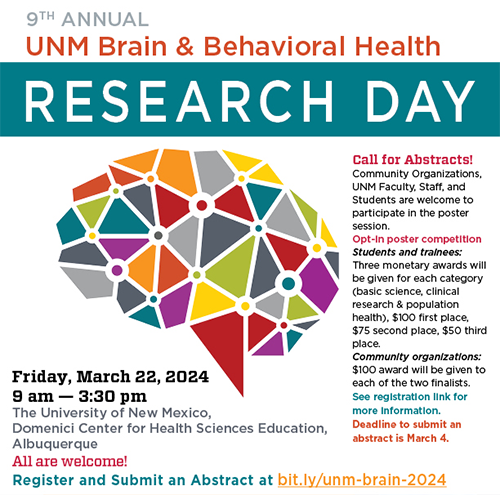Document Type
Poster
Publication Date
3-31-2023
Abstract
Glioblastomas (GBM) make up ~50% of primary brain tumors and prognosis has not improved over the last 30 years. Despite the inherently high inter- and intratumoral heterogeneity of GBMs, basic-helix-loop-helix (bHLH) transcription factors, ASCL1 and OLIG2, are present in the majority of tumors. Previously, we showed in patient-derived GBM xenograft (PDX-GBM) that ASCL1 binds to promoter and enhancer regions of cell cycle genes, as well as neurodevelopmental transcription factors including OLIG2. Similarly, we showed that OLIG2 binding overlaps with the majority (~90%) of ASCL1 binding sites, including at promoter and/or enhancer regions of ASCL1 and OLIG1/2 loci, illustrating their potential redundant and/or feed-forward function in GBM. It has been proposed that ASCL1 and OLIG2 contribute to the neural stem cell-like properties of tumor cells, which may promote tumor growth and progression but also the treatment resistivity and high recurrence rate of GBMs in patients. Using an immune competent glioma mouse model, we are able to efficiently induce tumors from glial progenitors surrounding the lateral ventricle while altering the levels of ASCL1 and OLIG2 to assess their combinatory roles in GBM progression. Remarkably, we found that loss of both Ascl1 and Olig2 prevents tumor formation, whereas the loss of only Ascl1 resulted in reduced cellular migration from the tumor bulk while the loss of Olig2 promotes a highly migratory phenotype. Conversely, elevating the levels of Ascl1 increased both tumor cell proliferation and migration similar to the loss of OLIG2. Using single cell RNA-sequencing, we found that tumor cells which express high levels of Ascl1 exhibit neural stem cell/astrocytic gene signatures, which supports ASCL1’s role as a marker of glioma-stem-cells. Collectively, these findings illustrate the role of ASCL1 and OLIG2 in regulating GBM initiation, proliferation, and migration where ASCL1 may directly be responsible for the highly invasive and proliferative phenotype of GBMs.
Recommended Citation
Myers, Bianca L.; Kathryn J. Brayer; Luis E. Paez-Beltran; and Tou Yia Vue. "Neurodevelopmental Transcription Factors Promote Proliferation, Regulate Cell Type, and Play Opposing Roles in Cellular Migration in Glioblastoma." (2023). https://digitalrepository.unm.edu/hsc-bbhrd/111


Comments
Poster presented at the Brain & Behavioral Health Research Day 2023